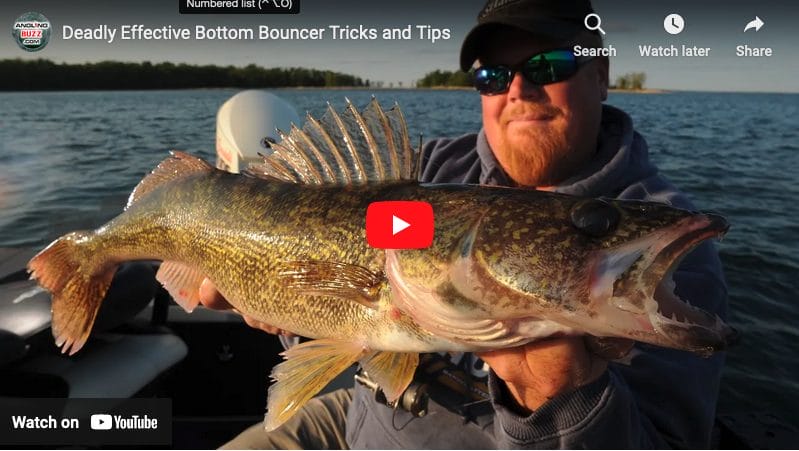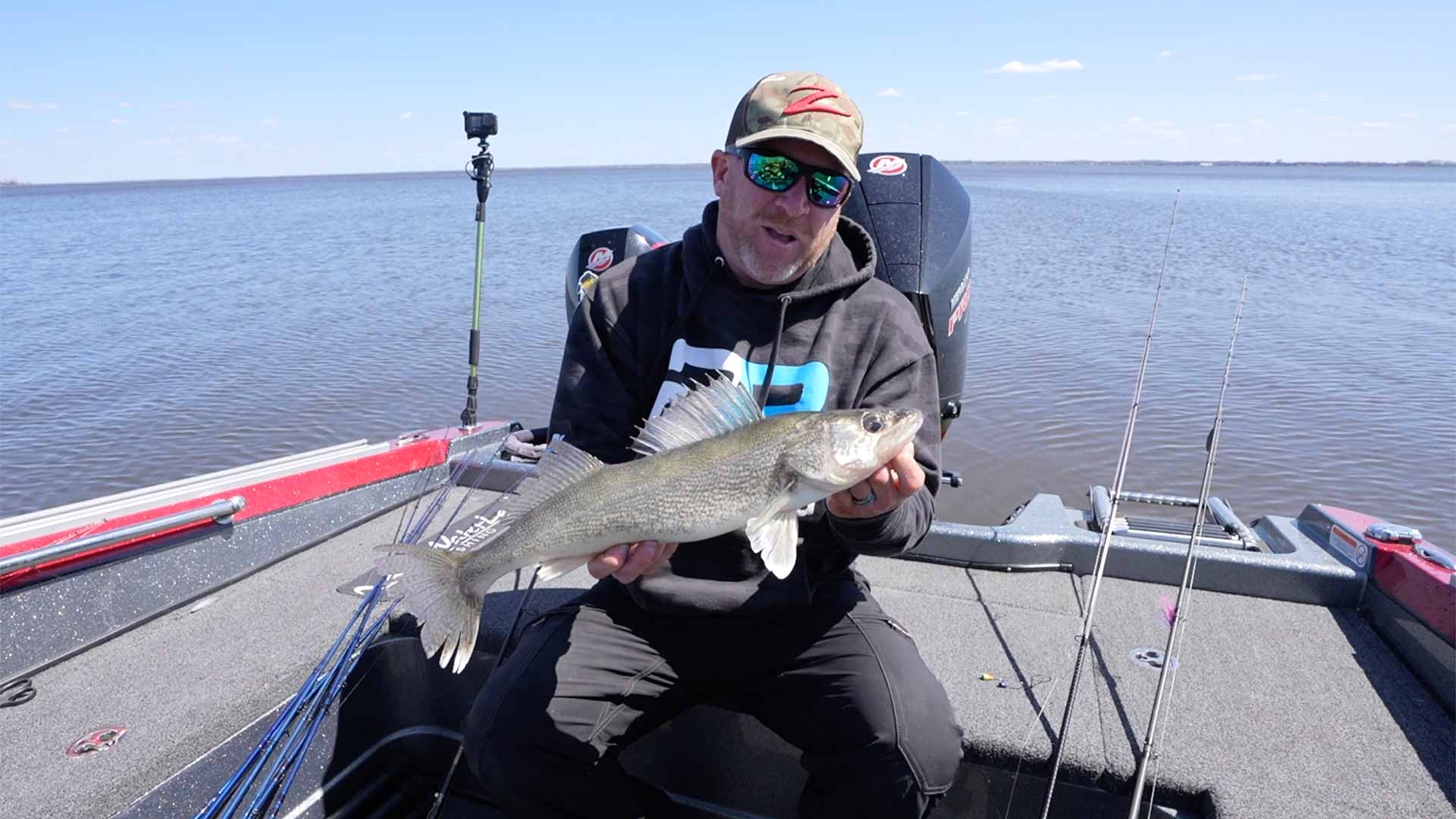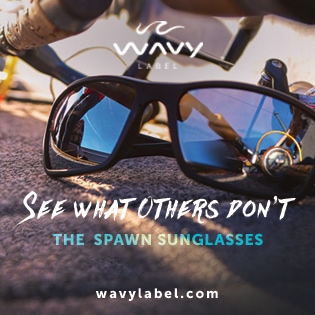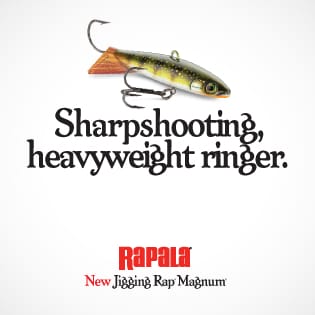Few things in life work as well as a bottom bouncer, making it pretty much the ultimate sinker for walleye fishing. The wire “leg” common to all bouncer styles allows your sinker to crawl up and over snags. Bouncers deflect off boulders (ideal for rocky Canadian lakes) and scratch across sand. Just clip on a livebait or spinner snell, add livebait, and you’re all set.
All bouncers self-adjust, depthwise, meaning that when depth changes (within reason), you sinker automatically runs a little deeper or shallower to compensate. The only thing that changes is the angle of your line extending downward.
In short, bottom bouncers sort of do most of the thinking for you, keeping your bait or lure in the fish zone, a few inches above bottom. So much so, that anglers often simply set their rods in rod holders, drift or troll along at the proper speed, and wait for the rod to bend. The trick is not jumping the gun and grabbing the rod out of the holder at the first indication of a bite. Rather, wait for it to bend, then throb, indicating that a walleye is firmly attached at the other end of the line.
Expensive, high-graphite-content bass rods tend to be too stiff, bending only near the tip when a fish bites. A rod that loads up too quickly telegraphs its presence to fussy fish, and they’re likely to drop the bait. Better yet is a softer, medium action walleye rod that bends through the midsection until it loads, giving walleyes ample time to suck in the bait. Seven to 7 ½-footers are about right.
So are small thumbar casting reels, spooled with 10- to 12-pound test durable monofilament line. Depressing the thumbar with your thumb releases additional line to compensate for depth changes. Some automatically reengage once you take your thumb off the thumbar, preventing the necessity of reaching over with your other hand to reengage the spool. They allow you to fish two rods simultaneously, or to keep one hand on the tiller motor while trolling.
Traditional v-shaped, “safety pin” bottom bouncers that evolved on the Missouri River system are ideal for presenting spinner rigs or livebait snells up to about 3 ½ to 4 feet in length. Any longer, and the bait tends to drag on the bottom. Some bouncers constructed a foot or more in length position your bait farther off bottom. Nice for fishing; tougher to store in your tackle box.
Slip bouncers combine the best aspects of snag-free presentation with the ability to feed line to a tentative walleye on the strike, allowing a few more seconds before you sweepset the rod forward to set the hook. Most are straight, rather than v-shaped, to fit in tackle boxes. Many attach to your line via an easy on-off clevis or coiled wire end that allows you to change sinker sizes without retying.
In most instances, 1 ½- to 2-ounce bouncers do the trick for shallow to moderate depth walleye presentations, drifting or trolling from ½ to 1 ½ mph. You can run a shallow-diving minnowbait behind bouncers at slightly faster speeds; just be aware that diving lures may be scratching bottom.
For deep, intensely slow, teasing livebait presentations, 3-ounce bouncers match nicely with what’s termed a “slow death” presentation, using a half-nightcrawler threaded onto a kinked, light-wire Aberdeen hook. The crawler ever-so-slowly spins or flops as you inch along, tantalizing fussy walleyes into striking.










